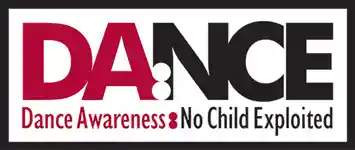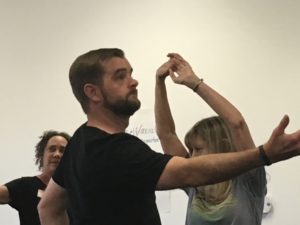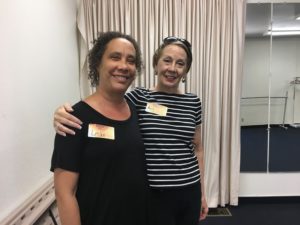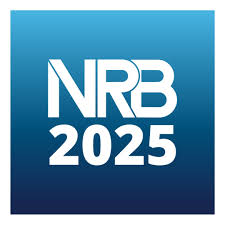Every time I see people ‘dance/move’ in appropriate, God-honoring ways, it catches my breath because it’s worship. Of course, underlying that opinion is a premise I have. Everybody is a dancer because everybody moves in lifestyle choreography. That doesn’t discount the value of trained, technical dancers. It just means that the dance family is larger than any of us expect it to be. It’s rare to see the culture evaluate that premise but I’d like to encourage you to do just that. Even if you didn’t attend the worship workshop on scripture choreography a few weeks ago and create within that context, think about what kind of lifestyle dances you choreograph. Is your morning movement crafted with anger or peace? Do you clothe yourself with kind movements extended to friends as well as enemies? Daily dances are seen by those around you and the movement choices you make in lifestyle and dance ministry choreography either reflect truth from scripture or they don’t. Both kinds of choreography are important and engage the body as the instrument of communication. Do you ever stop to look around and really be present to SEE the movement in yourself and others? It’s easy to be unaware and view body movement in lifestyle and dance ministry as an extra, as something that just happens. If that’s where you’re at, I encourage you to observe yourself. As I have studied scripture and enjoyed a personal relationship with Jesus, I’ve realized that following His design transforms movement for lifestyle choreography and for dance ministry. In fact, I wrote about it in one section of my book:
‘God, the Master Choreographer, is a mover. And so are His people. In Genesis 1:2, God initiated the dance and soloed as its first dancer. His Spirit “was hovering over the waters.” In Acts 17:28, He revealed that “for in him we live and move and have our being.” We have our being and our bodies in Him—living water. In the Old Testament, Scripture says the body God designed for His creatures is good (Genesis 1:31). In the New Testament, this good body becomes the Temple of the Holy Spirit: “Do you not know that your bodies are temples of the Holy Spirit, who is in you, whom you have received from God?” (1 Corinthians 6:19). That means the goal of dancing believers is to glorify Christ by embodying movement that transforms. Second Corinthians 3:18 says, “And we all, who with unveiled faces contemplate the Lord’s glory, are being transformed into his image with ever-increasing glory, which comes from the Lord, who is the Spirit.”…………………………God designed the body as an intentional holy vehicle for the worship of Him: “Therefore, I urge you, brothers and sisters, in view of God’s mercy, to offer your bodies as a living sacrifice, holy and pleasing to God—this is your true and proper worship” (Romans 12:1). In God’s eyes, a body giving glory to Him is a powerful, purposeful instrument. But there’s more. God’s chosen vehicle for worship has another major function. The body speaks in a universal language. Everyone has a body and everyone uses that body to communicate with others. In M. Adams’ article “Every Move You Make,” the author states, “Non-verbal communication is our first language. Babies make themselves understood without words.”1 God formed the body to talk using movement patterns that words stumble to access. Jesus spoke with His actions just as much as He spoke with His words. “Hence it is appropriate that we use movement to enrich our personal knowledge of Christ whom we approach by faith with our whole selves, not only our intellect” said Sara Savage in the written piece “Through Dance, Fully Human.”2 Of course, this awareness does not discount the usefulness and the power of the spoken/written word. It simply identifies a fact about non-verbal communication that we often fail to acknowledge. World famous UCLA psychologist Albert Mehrabian researched nonverbal communication (i.e., communication that is not spoken or written) and discovered some startling statistics. He found that only 7 percent of what is understood comes through the spoken word. Fully 55 percent of what people understand comes from non-verbal facial expression with 38 percent resulting from the tone of voice.3 Other research reveals even more. “Nonverbal signals can be used without verbal communication to convey messages; when nonverbal behavior does not effectively communicate a message, verbal methods are used to enhance understanding.”4Therefore, with God crafting the blueprint for human beings, it is not surprising to learn that non-verbal movement has the potential to paint biblical truth using a sensory language that everyone can understand.”………………………………………….
Webster’s Dictionary defines sensory as: the faculty of perceiving by means of sight, hearing, smell, taste, or touch.
So be transformed by the sensory language of movement and engage in lifestyle choreography and dance ministry choreography in whatever context God plants you. It may involve a class like the one from the worship workshop that Professor Leslie Bryan taught or it may involve the lifestyle choreography you exhibit at home. With memories of the workshop fresh in my heart, enjoy this picture of Leslie and I at the workshop!
1M. Adams, “Every Move You Make,” Successful Meetings, 1996, 45-46.
2 Sara Savage, “Through Dance, Fully Human,” in Beholding the Glory: Incarnation Through the Arts, ed.
3 A. Mehrabian. (1981.) Silent messages: Implicit communication of emotions and attitudes. Belmont, CA: Wadsworth, (currently being distributed by Albert Mehrabian, am@kaaj.com.
4 Republished with permission of Thomas Learning, Nonverbal Communication in Human Interaction, Mark L.Knapp and Judith A. Hall, 5th edition, 2007; permission conveyed through Copyright Clearance Center, Inc.




